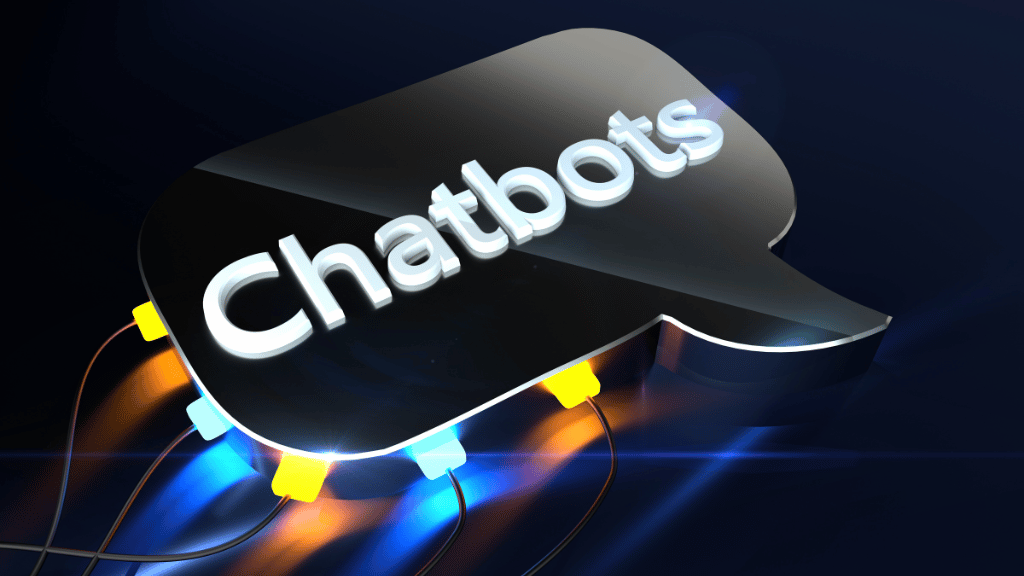14 Proven Strategies to Build a Loyal Brand Community in 2025

Imagine an active internet environment where clients interact, exchange their knowledge and promote your brand. This rich community maximizes loyalty, increases engagement and is a growth driver. Creating a community around your brand in 2025 is not a marketing trick, it is a strategic requirement.
In a time where consumers demand real experiences where they feel appreciated as well as listened to, they ensure that the brand creates an environment where people feel understood. This article discusses 14 creative methods to build a successful brand community and utilize such tools as Yotpo Loyalty and community UGC to generate interaction and trust.
Explore the 14 Best Ways to Create a Community Around Your Brand:
1. Build Community with Yotpo Loyalty
The Yotpo Loyalty helps drive communities based on advanced reward programs. Its API is compatible with e-commerce solutions, and it allows using a point-based program. Customers gain points on reviews or referrals etc. which are tracked on a centralized dashboard. The platform applies machine learning to make offers personal thus relevant.
The technical solution implies adding the SDK of Yotpo to your site. This enables dynamic widgets to show points and rewards and motivate them to participate. RESTful APIs will relate actions taken by the users with loyalty triggers such as gaining badges on posting in a forum. Build community with Yotpo loyalty is scalable to help both small businesses and enterprises. Its cloud technology guarantees stability and high speed data processing, which is vital in real-time interaction.
2. Host Webinars Interactively
Webinars establish the feature of instant connection of the brands with communities. APIs such as the one of Zoom allow hosting events in an unproblematic way. Webhooks stimulate automatic invitations by means of email or SMS whereas OAuth secures user authentication. Webinars will also have polls and Q-A modules, which are coded in JavaScript, to enable a higher level of interaction.
Technical setup is inclusion of webinar SDK in your site. The streaming will be on cloud, which means that latency will be minimal, vital globally. The analytics monitor the data of attendance and engagement such as the responses to polls in databases such as MongoDB. After an event, APIs send recordings into cloud storage, which can be accessed through gated content portals, where people are enticed into signing up the community.
3. Invent Special Forums
There are specific forums that promote strong relationships. Such platforms as Discourse employ the single sign-on (SSO) to enable a smooth incoming of users. REST APIs connect forums with your site, and they synchronize user profiles. Its moderating bots, aided by AI, detect spam by using keyword filters. Such as, the Node.js can process real-time post updates that guarantee the problem-free user experiences.
In technical terms, forums use WebSocket to be able to discuss in real time. PostgreSQL is an efficient database that contains threads, and can handle large numbers of queries. Gamification, through approval of active users in the form of badges, can be enabled by the plugins that are substantiated by Yotpo Loyalty rewards. CDN of CloudFlare provides quick load time, which is essential to global communities. The community UGC such as user tips is also retrieved and displayed using APIs.
4. Leverage Community UGC
Leverage community UGC contributes to real interaction by presenting consumer-generated material. Content management systems (CMS) are platforms that can collect UGC through APIs, aggregating posts sharing on social media or forums. Hashtag crawlers harvest the relevant content, and it is moderated by AI algorithms, so that it is of some quality.
Technically, the integration of OAuth on social media is through UGC platforms in a secure manner. Webhooks activate real-time updates each time the users tag something. UGC galleries with the help of a JavaScript widget are added to your web page, saying more about credibility. The moderation tools employ the use of natural language processing (NLP) to identify inappropriate text to make them consistent with the brand. UGCs are stored in the cloud such as AWS S3, which guarantees scalability and reduced loading time.
5. Install Gamification Systems
The gamification process is used to encourage active participation. Some platforms such as BadgeOS employ APIs to incorporate badges with their websites. A PHP backend keeps track of user activity, such as creation of community UGC, granting of points using cron jobs.
The technical configuration goes into placing widgets of gamification through JavaScript. User progress is stored in MySQL databases, and leaderboards are maintained on Redis as a fast-rendering structure. APIs get linked to email systems that send reward notifications. Cloud hosting is scalable supporting thousands of concurrent users. Badge triggers can benefit through A/B testing; these ensure enhanced engagement.
6. Kick off Social Media Challenges
Viral interactions occur due to social media challenges. Other channels such as Hootsuite API may distribute posts to channels and time them. Trackers refer to hashtag scripts that are constructed using Python to gather UGC within society. Brand safety is confirmed through the moderation of the submissions by AI.
Technically, OAuth APIs are linked to social sites, making sharing of contents easy. Webhooks are notifications upon posting of the challenge content by its users. AWS Lambda functions read the entries and they are placed in DynamoDB so that they may be scalable. Challenge galleries are embedded as JavaScript widgets on websites; they bring traffic. There is hashtag analytics that gauges reach.
7. Provide Personal Newsletters
Newsletters provide resourced information and enhance the connection within the community. Behaviour-based audience segmentation is done using APIs on platforms such as Mailchimp. User information is examined using machine learning models and content on the platform is personalized.
The installation entails APIs with CRM. Email transmission is conducted by SMTP servers and Redis stores the preferences of the users to be compulsorily fetched. JavaScript trackers will measure open rates, which are channeled into analytics. The use of A/B testing enhances subject lines leading to high engagement. Cloud hosting provides a stable solution to thousands of subscribers.
8. Create Mobile Programs
The use of mobile applications allows building the feeling of immersion into the community. Such frameworks as the React Native allow this. The push notifications, programmed in JavaScript, notify the user about the UGC in the community because of SDKs. To implement Yotpo Loyalty, APIs are connected synchronizing app data with rewards of such activity as posting content.
Technically, on apps, GraphQL is employed in data fetching in real-time. Sending and receiving cloud messages and creating user authentication are managed by Firebase. MongoDB can accommodate user interactions thus it is scalable. Live chats are possible using in-app forums, which are constructed using WebSocket. Usage analytics are used to track the use of apps, such as community leaderboards.
9. Avail of Live Chat Facilities
Live chat encourages live interaction in the community. Intercom and other instant messaging platforms are based on WebSocket. APIs combine chat systems with CRM systems synchronizing data about the user. The chatbots developed using NLP support simple queries and transfer complex queries.
The implication is the integration of SDKs into your web site. Chat logs of Redis are cached hence retrieved quickly. Cloud hosting enables uptime, which is very essential to worldwide users. Chat frequency is an analytics tool that measures engagement. APIs to Yotpo Loyalty include it, giving members points to active community members when they contribute to UGC.
10. Make Polls and Surveys
The community opinions are collected via polls and surveys that encourage activity. Interactive forms can be embedded on the platforms such as Typeform via APIs. JavaScript will offer dynamic polls that depend on the activity of the user, such as posting UGC in the community. Information is kept in MySQL and trends analysed using Python scripts. APIs synchronize feedback with Yotpo Loyalty to reward.
The process is carried out by embedding forms using iframes. The cloud servers guarantee swift loading speed. Webhooks activate real-time analytics due to their ability to update the data immediately. A/B testing is the best for optimal poll design and optimum sharing. User information is guarded against by security measures such as OAuth, thus reliability.
11. AI-Powered Chatbots
The chatbots with AI vertically increase participation due to the immediate support offered. Such platforms as Botpress are based on NLP to interpret user requests, which is provided through REST APIs. WebSocket guarantees real-time communication, whereas MongoDB logs interactions to analyze them.
The installation is achieved by inserting JavaScript SDKs to web pages. Scalability is guaranteed as there can be thousands of chats on cloud hosting. The AI learns by using the data of the user to increase response accuracy. APIs connect to D2C loyalty programs, rewarding active users. Chat metrics are monitored using analytics and improved performances are achieved. It is a technical strategy that guarantees smooth community interactions.
12. Create Quiz Games
Interactive quizzes stimulate interaction because they provide individualized interaction. Some websites (called platforms), such as Outgrow, provide quizzes via APIs to be embedded into websites. JavaScript initiates dynamic queries depending on the user entries, which are stored in MySQL.
The technical set up is that of iframe integration of quizzes. The speed of loading the results is provided by Cloud servers, whereas the Webhooks make the results updated in real-time. AI algorithms scrutinize the answers offering to customize future quizzes. APIs connect to D2C loyalty programs, offering points for participation. Analytics help to follow completion rate, which devices content strategy.
13. VH Host Virtual Events
Communities are united in virtual events through living experiences. Event streaming platforms such as Hopin rely on APIs, which are combined with an OAuth to provide access security. WebSocket allows conducting live chats, and AWS S3 stores the records.
The work includes integrating event SDKs with websites. Streaming through cloud infrastructure is not latency-prone. Attendance and interactions are monitored and kept in PostgreSQL. APIs connect to D2C loyalty programs, rewarding attendees. A/B testing increases event format optimization, with the greatest amount of participation. Such a technical structure makes virtual experiences smooth.
14. Design Content Hubs
Community resources get centralized in the form of content hubs and increase engagement. Social media platforms, such as HubSpot, will pull together community-generated content (UGC) such as comments to blogs via an API. There are JavaScript widgets presenting content which is cached in CDN to achieve high speed. Submission AI moderation will filter on sentiment analysis.
The technical configuration implies the integration of CMS. Cloud hosting enables scalability and Redis caches its contents to be accessed at a fast rate. APIs are aligned with Yotpo Loyalty, and they are awarded. The visit to the hub is monitored with analytics. The A/B tests configure layouts, and provide a user-friendly experience. This way will guarantee lively content hubs.
Conclusion
Building a community around your brand as a way to increase loyalty and engagement in 2025 is an excellent move. Applications such as Yotpo Loyalty and community UGC generate custom experiences when it comes to one-on-one relationships.
Through the use of webinar platforms, forums, games, and others brands can build healthy communities. Technical integrations such as APIs and AI are used to make sure that it is scalable and relevant. Such approaches make the customers an advocate, which increases reach and visibility of revenue.









